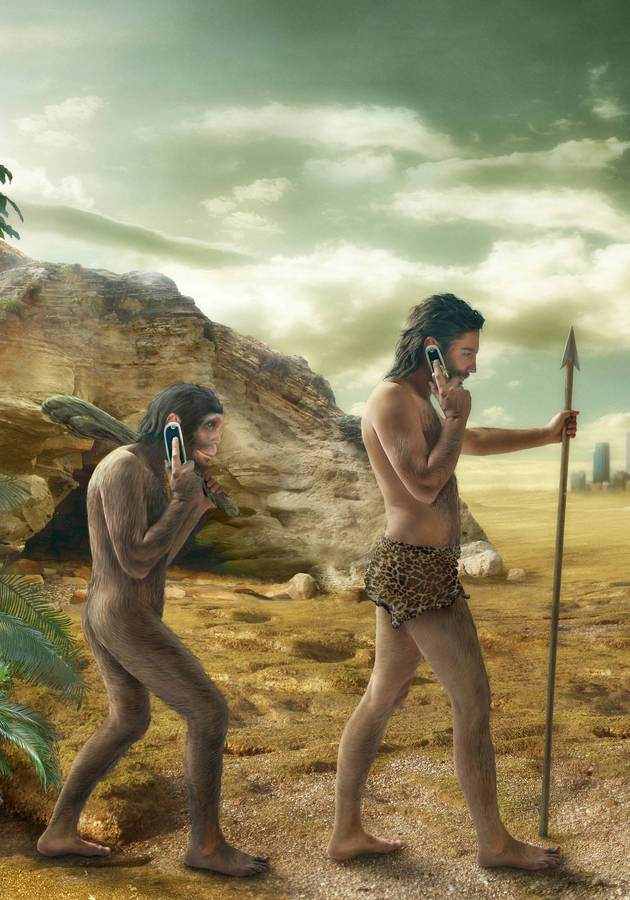Let’s start with a little quiz. Let’s suppose that you’ve just bought or used a product that is everything the ad says it is. What do you do?
If you are like most people, and you probably are, you'll turn on your computer or handheld device and start following the company on Facebook, Twitter, Instagram.
Why do you do that? First, to stay updated, and second, to show your admiration and support for the company that just made your life a little bit easier, better, and/or more enjoyable.
What does this mean in terms of the economy and the markets? Well, that is precisely the question that “The Thank You Economy” by Gary Vaynerchuk, a Belarusian-born American entrepreneur, attempts to answer.
The last half a century saw the world transformed in such ways that most businesses nowadays operate in something justly called “the global village.” But are most businesses ready to embrace this?
Read ahead to find out!
The good old days
Just imagine this scenario: you live in a town with only a few hundred people. Consequently, and unsurprisingly, there are only one or two butchers in town.
Now, let’s say that one of them is more popular than the other, and most people go to him. He is courteous, caring, polite, and always sells the good stuff.
However, at any given day, you notice him mixing some very low-quality beef in your ground meat.You complain to him, but he, evidently caught in a lie, is rude and chases you away. What do you do?
Well, the thing you can do: you start telling the whole neighborhood. And because everybody knows everybody in a town of a few hundred people, before too long, your butcher loses about half of its customers.
Precisely because of this, most grandparents are right when they say that “back in their days” sellers were more courteous and considerate. They couldn’t afford not being.
However, after the urbanization of the second half of the 20th century, courteous service started being much less critical. Because there are thousands of butchers in a highly populated city, and you know only a small percentage of the population. Moreover, the chances of you regularly going to the same butcher are not that high.
Consequently, the butcher doesn’t have to care to earn his customers’ trust anymore: losing one customer, in an urban setting, means losing one customer. And that’s it.
So, it seems that grandparents were quite right: before urbanization (a very recent phenomenon), business (almost always small, local business) worked the very way they used to say. That is: everybody was courteous, considerate, and cultured. Fortunately, after several decades of drifting, we’re back on track!
The great new days
As far as Vaynerchuk is concerned, business is no exception to that strange adage: “the more you change and improve, the more you realize that things remain the same.”
Though some would say it is an idealized version of how things happened a century ago, he seems to completely agree with the idea that older people knew the benefit of keeping the customers at the very center of a company’s priorities much better than modern sellers.
He also agrees with the notion that their wisdom faded away when big corporations started to expand. That event signaled the need for a new type of employees called “managers,” specially trained to find cost-effective methods that helped companies to grow while avoiding their customers’ needs.
However, not that long ago, that all suddenly changed! Why? Two words: social media.
By turning the world into a virtual global village, social media gave back the power to the customer. So much so that, if a company nowadays isn’t active on social media networks, it is all but a livingcompany.
The organizations can’t afford to be profit-based anymore; they are, once again, customer-centric. Similarly to the “the good old days,” when being rude to a single customer meant losing half of your clients, now a single tweet or Facebook post can practically ruin a company.
And it’s even better nowadays because this type of communication and interaction ignores by the constraints of geography. Every big company is now graded everywhere and consistently, so every big company has no choice but to adapt to a new (or, rather, old) mentality.
If your organization still finds it hard to accept this, then you need to prepare yourself for stagnation. Even companies that have existed for centuries are endangered nowadays because they are not ready to accept social media and the idea of everlasting evolution. Don’t be one of these companies!
Interact with your customers, and make them comfortable when it comes to using your services. It has been proven many times over that dialogue increases conversions and makes the customers/users feel more appreciated.
In other words, there is a new sheriff in advertising – and its name is social media.
Transmedia Advertising
Vaynerchuk made his name a decade ago when he wrote and published “Crush It!”, a book aiming to teach thousands of people how to cash in on their passion.
Of course, the book advised newcomers to use the enormous power of social media to build a brand as fast as possible, noting that we live at the best and most democratic times for making so in the history of humanity. Why do we bother telling you this? Well, because Vaynerchuk didn’t advertise “Crush It!” only on social media. Ironically, he also used billboards.
So, is he yet another one of these new-age gurus who rarely practice what they preach? Not at all!
Vaynerchuk is adamant that social media networks have made things easier, but he never says that traditional marketing models are gone. That will probably happen in some very near future, but, until then, it’s best to use both models combined if you want to reach more customers.
Here’s a great example of how transmedia advertising actually works in practice! During the 2010 NHL Winter Classic, Reebok aired an interesting commercial starring Sidney Crosby and Maxime Talbot, then Stanley Cup champions. In the ad, the players shot packs in an old dryer in a garage and tallied points on a scoreboard.
The interesting part? Well, the viewers saw only snippets of the match. If they wanted to see the winner, they had to follow Reebok on Facebook.
We don’t need to tell you that Reebok’s strategy worked: thanks to this phenomenal transmedia ad, it gained them tens of thousands of new followers in just a few days.
Managing Social and Traditional Media
Why did Reebok’s campaign work? Well, first of all, because it generated just the right amount of tension and excitement necessary to make people interested in resolving it and satisfying their curiosity, without looking too dull or burdensome. But, secondly and more importantly, because it was structured according to the rules of both types of media.
You see, as Seth Godin taught us, there is a huge difference between social media and traditional media advertising. In short, the difference is this: traditional media only sends messages; social media also receives them.
Garnering the attention of the audience to your product and company is all that you need to care about in traditional media.Social media is where you can see if this actually works.
So, if – that is, when – you decide to go online, be aware that you need to follow a different set of rules if you want to make yourself a favor and use social media to your benefit.
Facebook and Twitter are not there for you to neatly pack your messages and share them with the audience. They are there to allow your customers to interact – with you.
Ignore this, and there’s a good chance that your ads will be ignored as well. Embrace it, and there’s a great chance that your products and services will benefit from your decision as well.
Here is how!
The benefit of the feedback
Social media interacting networks give marketers hundreds of new ways to engage with existing and potential customers in a way that wasn’t possible just until a while back. And one of these interactions is so important and influential that it has changed how some businesses do business overnight. Feedback!
You see, back in the Industrial Age, when there wasn't a competition, and a product or service satisfied millions of people without any modifications for specific customer demand, the minority customers would always end up on the losing side.
Just imagine if you were a lefty in the 1930s. Why would someone bother producing things explicitly for a few? If you wanted, you could buy the things everybody else was using. If you didn’t, well, it’s not like you could buy something else! But that was back then.
Now, globalization is forcing companies to place a customer’s unique wants and needs as a top-notch priority. Because if someone doesn’t like you nowadays, they’ll spread the bad news faster than ever. You won’t even have the time to react. So, it’s much cheaper to invest in a new machine than to risk the dissatisfaction of a customer.
The even better thing? Whatever your product or service is, you can constantly improve and update it, courtesy of millions of real-time testers and users who have gotten used to sharing their brutally honest opinions online – with you!
Neglect unreliable economic critics
Unfortunately, we live in a world of “alternative facts,” one in which it is impossible to know what is true and what is not even in the case of fact-based data.
What should we say about advertising and economics, where the actual effect of some strategies was not measurable until just a few decades ago?
Well, just that: now it is measurable, and you can see the effect of your ads and interactions in real-time, and as precisely as imaginable.
There are still many old-world economists out there, though. Vaynerchuk kindly asks to not believe when they say things such as the ones below:
• “ROI doesn’t exist.” Even if you can’t measure it precisely, the return of investment (ROI) is the most important thing you should be interested in if you have your own business. After all, how can you assess your company’s success in the long run if you don’t calculate the return on investment in the short term?
• “The metrics are not trustworthy.” Numbers were never as correct as nowadays. They may have been unreliable until half a century ago, but now they can help you see not only the big picture but the picture as it is being painted – by you.
• “Social media marketing and interaction don’t have to be implemented by every company.” Three words: ha, ha, ha. Everyone who ever believed that has either changed their mind in the meantime or went out of business since the publication of “The Thank You Economy.”
Final Notes
Even though “The Thank You Economy” may seem like straightforward and commonsense nowadays, bear in mind that it was published just soon after Facebook had achieved its first positive cashflow, and only a few years after the foundation of Twitter.
Back then, many deemed Vaynerchuk’s insistence that “either you’re using social media to interact with your customers, or you’re dead” as an exaggeration, but time has proven him right.
And precisely because of that, you probably have already implemented most of the suggestions and guidelines shared in “The Thank You Economy” in your business. An excellent book for 2010 – but a bit outdated for 2020.
12min Tip
Interact with your customers as often as you can via the most suitable social medium for your business. And by interaction, we mean “share what you need with them, but also listen to their suggestions.” From here on, only one step remains to enter the very kind circle of progress: your products becoming better, your customers attracting new customers, you get more and better feedback, etc.




























